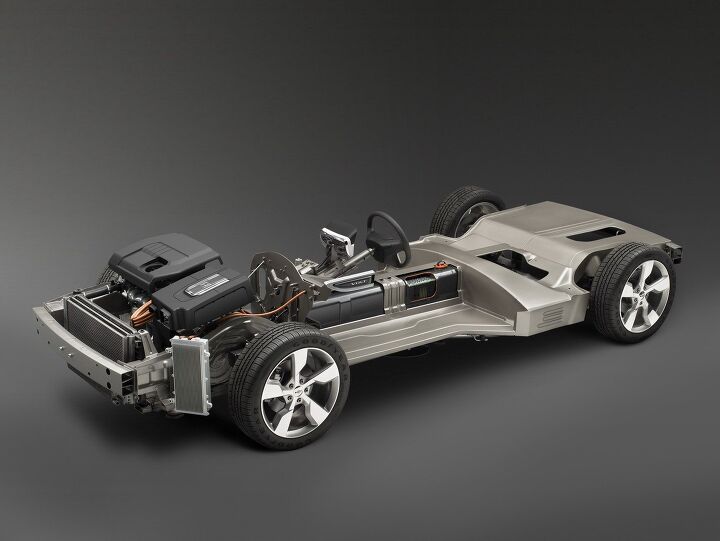About Those Chevy Volt Safety Protocols…
I caught hell from a number of TTAC’s Best and Brightest five days ago, when I blogged about the Chevrolet Volt fire at a NHTSA facility but failed to initially note GM’s response. At the time, GM’s Greg Martin said
GM has safety procedures for handling the Volt and its battery after an accident. Had those been followed, there wouldn’t have been a fire.
At the time, a number of readers accused me of bias for not including Martin’s response at first. Eventually I conceded that this was some worthwhile perspective for the story, but I cautioned that it only represented the opinion of one GM employee. Whether or not NHTSA actually followed those procedures remained an open question… until now. Automotive News [sub] is reporting that NHTSA couldn’t possibly have followed those procedures, nor indeed could anyone else, for the simple reason that GM failed to share them with anybody. So not only is the NHTSA fire being blamed on the fact that government regulators were not given the necessary safety procedures, but it turns out that rescue workers, salvage yards, towing companies and the like were not taught how to discharge the Volt’s battery either. In other words, this NHTSA crash was an important eye-opener for the Volt team.
GM had trained a number of rescue workers prior to the rollout, showing how to disconnect the Volt’s batteries and rescue occupants without running the risk of electrocution. But the NHTSA fire was caused because the Volt’s battery wasn’t fully drained before being put in storage, and this key safety step managed to escape the rescue training as well. Says GM’s Rob Peterson
We had a process [for draining the battery] internally but I don’t believe it was shared with anyone. The incident with NHTSA raised awareness that we had to develop a procedure and alert all stakeholders.
GM’s EV engineering honcho Jim Federico adds
The fire occurred because the battery wasn’t completely discharged after the test… GM developed its battery depowering process for the Volt after NHTSA’s test.
Though not as bad as a technical defect, this oversight is certainly a bit embarrassing to GM, which now has to endure the lectures of folks like Clarence Ditlow of the Naderite Center For Auto Safety, who rants
I can’t conceive that they didn’t have a standard operating procedure in place for handling a wrecked vehicle before the car went on sale. NHTSA and GM should have established protocols in place before it went on sale.
And you have to admit, he has a point…
More by Edward Niedermeyer
Latest Car Reviews
Read moreLatest Product Reviews
Read moreRecent Comments
- MaintenanceCosts Nobody here seems to acknowledge that there are multiple use cases for cars.Some people spend all their time driving all over the country and need every mile and minute of time savings. ICE cars are better for them right now.Some people only drive locally and fly when they travel. For them, there's probably a range number that works, and they don't really need more. For the uses for which we use our EV, that would be around 150 miles. The other thing about a low range requirement is it can make 120V charging viable. If you don't drive more than an average of about 40 miles/day, you can probably get enough electrons through a wall outlet. We spent over two years charging our Bolt only through 120V, while our house was getting rebuilt, and never had an issue.Those are extremes. There are all sorts of use cases in between, which probably represent the majority of drivers. For some users, what's needed is more range. But I think for most users, what's needed is better charging. Retrofit apartment garages like Tim's with 240V outlets at every spot. Install more L3 chargers in supermarket parking lots and alongside gas stations. Make chargers that work like Tesla Superchargers as ubiquitous as gas stations, and EV charging will not be an issue for most users.
- MaintenanceCosts I don't have an opinion on whether any one plant unionizing is the right answer, but the employees sure need to have the right to organize. Unions or the credible threat of unionization are the only thing, history has proven, that can keep employers honest. Without it, we've seen over and over, the employers have complete power over the workers and feel free to exploit the workers however they see fit. (And don't tell me "oh, the workers can just leave" - in an oligopolistic industry, working conditions quickly converge, and there's not another employer right around the corner.)
- Kjhkjlhkjhkljh kljhjkhjklhkjh [h3]Wake me up when it is a 1989 635Csi with a M88/3[/h3]
- BrandX "I can charge using the 240V outlets, sure, but it’s slow."No it's not. That's what all home chargers use - 240V.
- Jalop1991 does the odometer represent itself in an analog fashion? Will the numbers roll slowly and stop wherever, or do they just blink to the next number like any old boring modern car?































Comments
Join the conversation
First, why wouldn't NHTSA personnel think to discharge the batteries just like you would any electrical device (tube TV, microwave oven, anything with a capacitor, etc.) before you work on it? Second, why don't EVs and hybrids have some sort of electrical master switch like race cars?
I didn't think the fact that the batteries were flammable was the issue (in this case) but rather that GM didn't provide a procedure for properly discharging them after an accident. There are lots of things in cars that are highly flammable or burn at extremely high temperatures with no special warnings, old style magnesium wheels or computer components for example. This will probably get worse as technology is pushed to provide increased fuel economy.